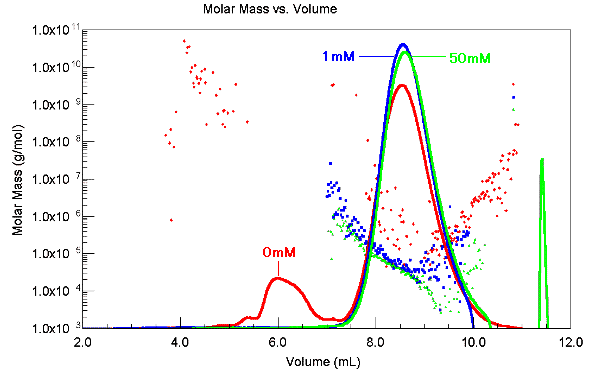Cellulose Acetate (4) (DMF Eluent: Effect of LiBr Concentration)
In the case of polymers which have ionic functional groups, the ionic functional
groups repel each other and/or aggregation take place, and therefore, the apparent
molecular size of the polymers become large. When analyzing such polymers by a
organic SEC (GPC) column (GPC
KD-806M) with DMF as the eluent, elution
time may be very fast and/or abnormal peak shape may be obtained. To prevent such
ionic dissociation, the addition of salts such as LiBr is know to be effective.
Although the optimal concentration of LiBr is considered to be around 10mM, no
systematic study on this point has been performed. Here, the result of the study
to determine the optimal concentration range of LiBr in DMF is shown for cellulose
acetate. It is confirmed that the concentration of 10mM which has been used traditionaly
is in the range of optimal concentration range. In the figure, chromatograms show
the output from RI detector and "x" marks show the output from MALS (multi angle
laser light scattering) detector.
From the result, we can say that apparent large molecular weight components exist when LiBr is not added.
Please refer to the case of
Poly(vinylpyrrolidone).

Sample : 0.1%
Cellulose acetate, 100micro-L
Column : Shodex GPC KD-806M (8.0mmID*300mm)
Eluent : LiBr in DMF
Flow rate : 1.0mL/min
Detector : Shodex RI, MALS
Column temp. : 40deg-C
